-
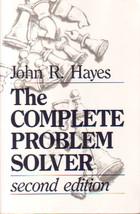
The Complete Problem Solver
This unique volume returns in its second edition, revised and updated with the latest advances in problem solving research. It is designed to provide readers with skills that will make them better problem solvers and to give up-to-date information about the psychology of problem solving. Professor Hayes provides students and professionals with practical, tested methods of defining, representing, and solving problems. Each discussion of the important aspects of human problem solving is supported by the most current research on the psychology problem solving. "The Complete Problem Solver, Second Edition" features: *Valuable learning strategies; *Decision making methods; *Discussions of the nature of creativity and invention, and *A new chapter on writing. "The Complete Problem Solver" utilizes numerous examples, diagrams, illustrations, and charts to help any reader become better at problem solving. See the order form for the answer to the problem below. -

宝宝的第一本游戏书
风靡德国的亲子游戏书 全面提升宝宝的运动、情感、语言认知能力! ................... ※编辑推荐※ 本书包含101个独特的游戏,这些游戏不仅能够加深父母宝宝之间的情感联系,更能让宝宝在有趣健康的环境中健康成长,创造性的理念、手把手的指导,让您学会培养独立自信、好性格、高情商、有创造力的宝宝。 ................... ※内容简介※ 本书包含101个适合0~1岁宝宝的游戏建议,这些游戏由风靡德国四十多年的亲子游戏课程中精选而来,广受德国父母欢迎。通过这些游戏,能够让宝宝的运动、情感、社交、语言和认知能力得到大幅度提高,同时能够加深父母和宝宝之间情感联系,让父母真正参与到宝宝的成长中,在轻松好玩的游戏中培养出健康、独立、自信的超能宝宝! -
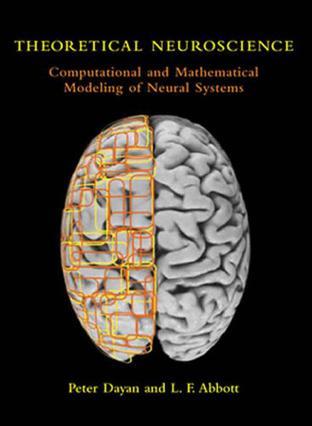
Theoretical Neuroscience
Theoretical neuroscience provides a quantitative basis for describing what nervous systems do, determining how they function, and uncovering the general principles by which they operate. This text introduces the basic mathematical and computational methods of theoretical neuroscience and presents applications in a variety of areas including vision, sensory-motor integration, development, learning, and memory.The book is divided into three parts. Part I discusses the relationship between sensory stimuli and neural responses, focusing on the representation of information by the spiking activity of neurons. Part II discusses the modeling of neurons and neural circuits on the basis of cellular and synaptic biophysics. Part III analyzes the role of plasticity in development and learning. An appendix covers the mathematical methods used, and exercises are available on the book's Web site. -
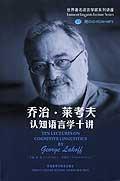
乔治·莱考夫认知语言学十讲
《乔治·莱考夫认知语言学十讲》概括了作者对语言学某一领域的研究成果;同时讲座的形式使深奥的内容变得深入浅出,易于理解。北京航空航天大学外语系和外国语言研究所于2004年4月邀请了认知语言学创始George Lakoff教授来北京作了系列讲座。讲座先后在北京航空航天大学、北京大学、清华大学、北京师范大学和北京外国语大学进行。Lakoff教授通过十次讲座系统讲授了认知语言学的核心内容以及它的历史发展、与其他学科的交叉、最新动态及未来趋势等。讲座基本涵盖了Lakoff教授41年来的主要学术观点和研究成果。本系列讲座成书名为《乔治·莱考夫认知语言学十讲》,是“世界著名语言学家系列讲座”丛书中的一本。 -
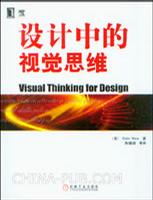
设计中的视觉思维
《设计中的视觉思维》主要介绍视觉思维的原理,并用这些原理来指导视觉图像的设计。哪些颜色和形状比较突出和醒目、在什么样的情况下应用图像来代替文字等都是设计细节中需要考虑的问题,而这些细节往往可以影响一个设计方案的成败。书中顺序介绍了人的视觉生理结构、影响人视觉思维的设计要素,以及如何有效地利用各种设计要素有效地影响人对设计的感受。《设计中的视觉思维》可作为视觉媒体设计人员、互联网图形设计人员的参考用书。设计人员更多地需要以辅助受众思维过程的方式来呈现信息。幸运的是,与人类视觉感知相夭的科学研究结果为此提供了可用的指南。作者将我们现在所知的感知、认知和注意力转化为设计人员可以直接应用的具体建议。他阐述如何将设计作为认知工具来扩展观众的思维——就像用锤子扩展人手一样。有经验的专业设计人员和学生都应该学习一下,在为人们设计信息工具时,如何最大限度地发挥信息工具的作用。《设计中的视觉思维》特点:呈现了视觉思维的复杂过程,这个复杂过程的每个阶段都需要特定的设计技术来支持。为设计人员和负责设计的软件开发人员提供了实用的、任务导向的信息。书中实例丰富,图文并茂。使用”主动视觉”的原则,将图形设计看作是一种认知工具。 -
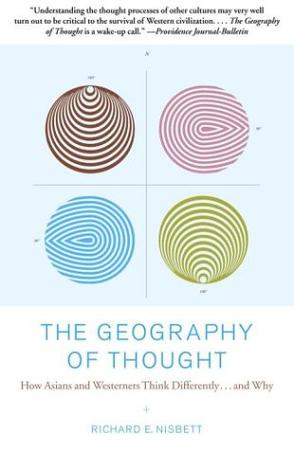
The Geography of Thought
From Publishers Weekly This book may mark the beginning of a new front in the science wars. Nisbett, an eminent psychologist and co-author of a seminal Psychological Review paper on how people talk about their decision making, reports on some of his latest work in cultural psychology. He contends that "[h]uman cognition is not everywhere the same"-that those brought up in Western and East Asian cultures think differently from one another in scientifically measurable ways. Such a contention pits his work squarely against evolutionary psychology (as articulated by Steven Pinker and others) and cognitive science, which assume all appreciable human characteristics are "hard wired." Initial chapters lay out the traditional differences between Aristotle and Confucius, and the social practices that produced (and have grown out of) these differing "homeostatic approaches" to the world: Westerners tend to inculcate individualism and choice (40 breakfast cereals at the supermarket), while East Asians are oriented toward group relations and obligations ("the tall poppy is cut down" remains a popular Chinese aphorism). Next, Nisbett presents his actual experiments and data, many of which measure reaction times in recalling previously shown objects. They seem to show East Asians (a term Nisbett uses as a catch-all for Chinese, Koreans, Japanese and others) measurably more holistic in their perceptions (taking in whole scenes rather than a few stand-out objects). Westerners, or those brought up in Northern European and Anglo-Saxon-descended cultures, have a "tunnel-vision perceptual style" that focuses much more on identifying what's prominent in certain scenes and remembering it. Writing dispassionately yet with engagement, Nisbett explains the differences as "an inevitable consequence of using different tools to understand the world." If his explanation turns out to be generally accepted, it means a big victory for memes in their struggle with genes. From Scientific American Nisbett, a psychologist and Distinguished University Professor at the University of Michigan at Ann Arbor, used to believe that "all human groups perceive and reason in the same way." A series of events and studies led him gradually to quite another view, that Asians and Westerners "have maintained very different systems of thought for thousands of years." Different how? "The collective or interdependent nature of Asian society is consistent with Asians' broad, contextual view of the world and their belief that events are highly complex and determined by many factors. The individualistic or independent nature of Western society seems consistent with the Western focus on particular objects in isolation from their context and with Westerners' belief that they can know the rules governing objects and therefore can control the objects' behavior." Nisbett explores areas that manifest these different approaches--among them medicine, law, science, human rights and international relations. Are the societal differences so great that they will lead to conflict? Nisbett thinks not. "I believe the twain shall meet by virtue of each moving in the direction of the other."